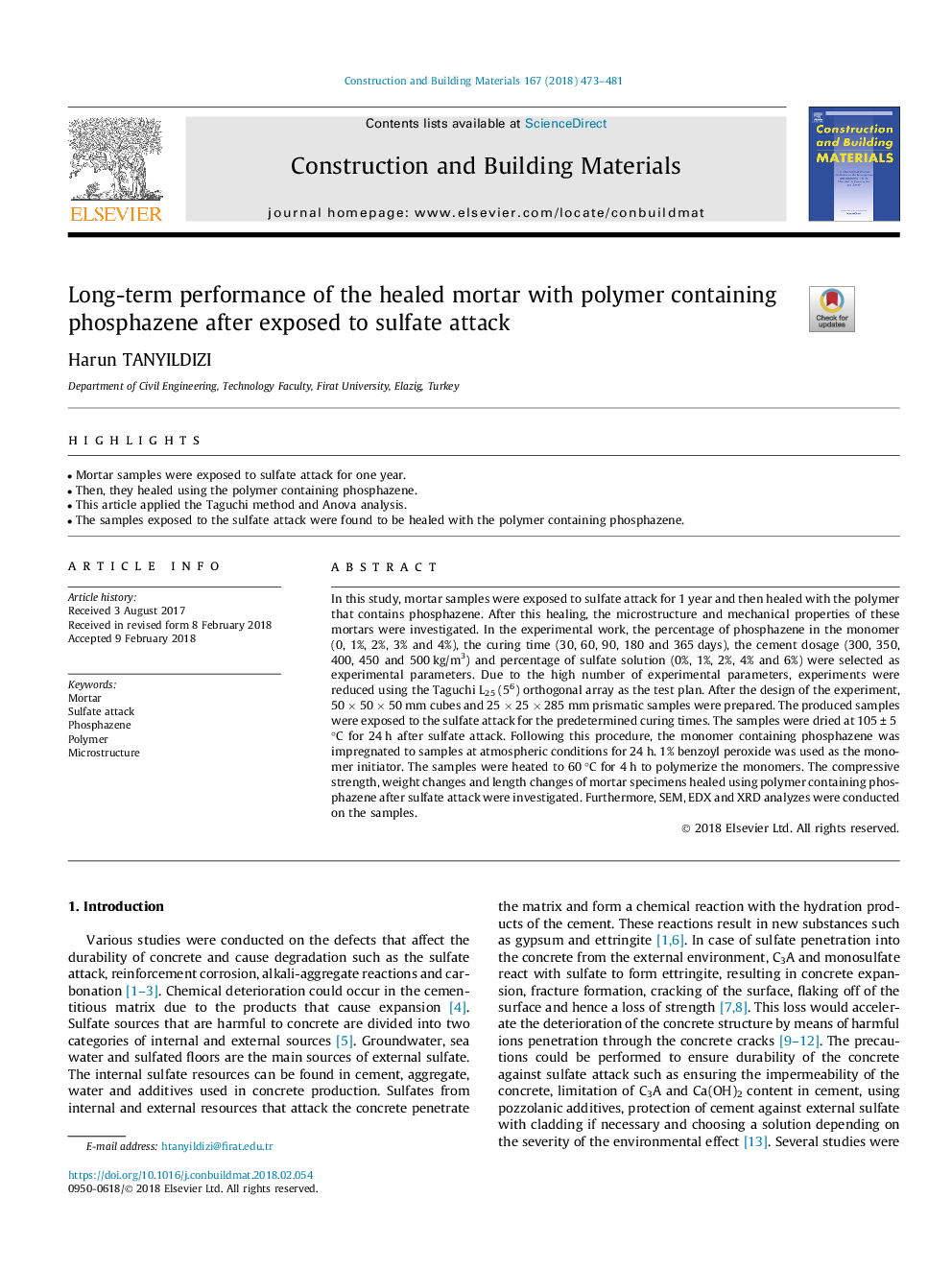| Article ID | Journal | Published Year | Pages | File Type |
|---|---|---|---|---|
| 6715142 | Construction and Building Materials | 2018 | 9 Pages |
Abstract
In this study, mortar samples were exposed to sulfate attack for 1â¯year and then healed with the polymer that contains phosphazene. After this healing, the microstructure and mechanical properties of these mortars were investigated. In the experimental work, the percentage of phosphazene in the monomer (0, 1%, 2%, 3% and 4%), the curing time (30, 60, 90, 180 and 365â¯days), the cement dosage (300, 350, 400, 450 and 500â¯kg/m3) and percentage of sulfate solution (0%, 1%, 2%, 4% and 6%) were selected as experimental parameters. Due to the high number of experimental parameters, experiments were reduced using the Taguchi L25 (56) orthogonal array as the test plan. After the design of the experiment, 50â¯Ãâ¯50â¯Ãâ¯50â¯mm cubes and 25â¯Ãâ¯25â¯Ãâ¯285â¯mm prismatic samples were prepared. The produced samples were exposed to the sulfate attack for the predetermined curing times. The samples were dried at 105â¯Â±â¯5â¯Â°C for 24â¯h after sulfate attack. Following this procedure, the monomer containing phosphazene was impregnated to samples at atmospheric conditions for 24â¯h. 1% benzoyl peroxide was used as the monomer initiator. The samples were heated to 60â¯Â°C for 4â¯h to polymerize the monomers. The compressive strength, weight changes and length changes of mortar specimens healed using polymer containing phosphazene after sulfate attack were investigated. Furthermore, SEM, EDX and XRD analyzes were conducted on the samples.
Related Topics
Physical Sciences and Engineering
Engineering
Civil and Structural Engineering
Authors
Harun TANYILDIZI,
